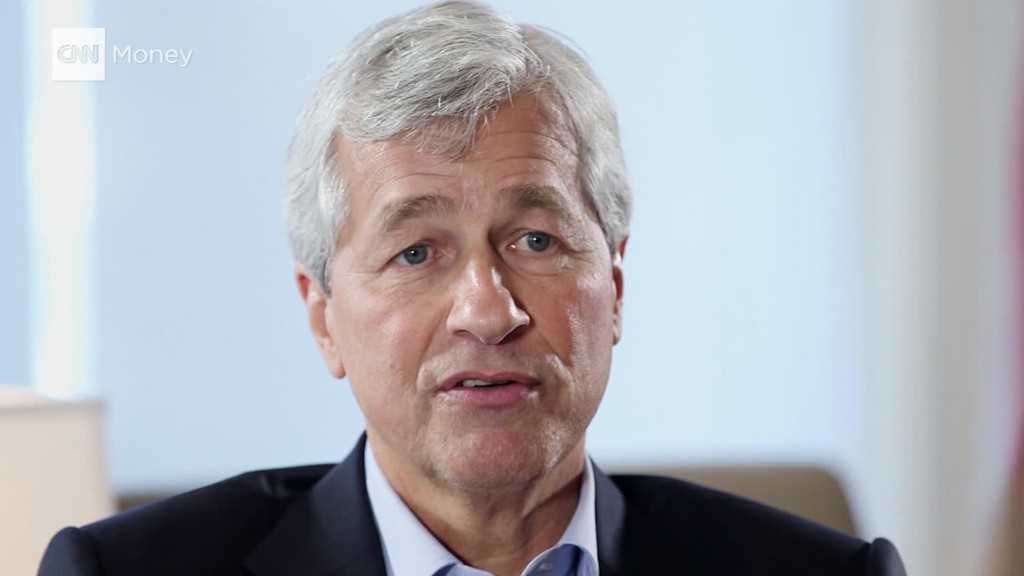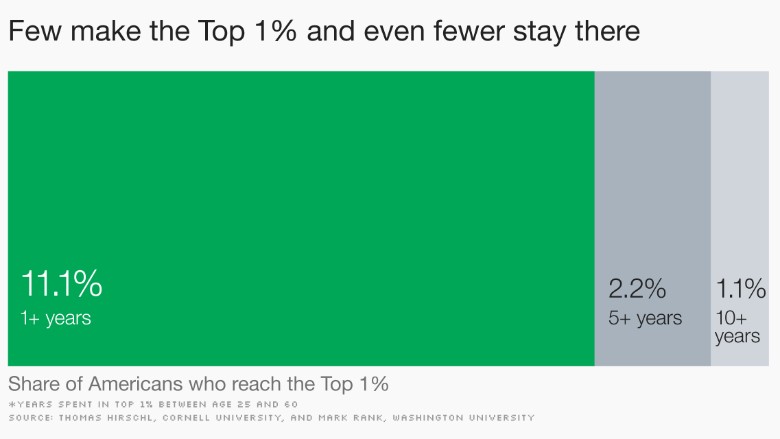
Made it into the Top 1%? Congrats!
Just don't expect to stay there for very long.
The Top 1% is often considered an exclusive, monolithic group, but folks actually rise up into it and fall out of it quite often. That's because their incomes can vary widely year to year.
Some 11% of Americans will join the Top 1% for at least one year during their prime working lives (age 25 to 60), according to research done by Thomas Hirschl, a sociology professor at Cornell University. But only 5.8% will be in it for two years or more.
As for holding onto this status for at least 10 years? Only a miniscule 1.1% of Americans are this fortunate.

"Affluence is dynamic, said Hirschl, who calculated that it took $332,000 to get into the Top 1% in 2010. "The 1% really isn't the 1%. People move around a lot."
Wages only make up a portion of the income of the upper echelon, particularly the mega-rich. Much of their income comes from capital gains on stocks and real estate or from the sale of businesses. These can be wildly inconsistent from year to year.
Take the Top 400 taxpayers in terms of income. They had an average income of $265 million in 2013, but only a small fraction of that came from salaries, according to recently released Internal Revenue Service data. Instead, their incomes were pumped up by the sales of capital assets, such as stocks, real estate and businesses, and certain capital gains.
The IRS looked at how frequently the same Top 400 taxpayers appeared on the list over a 22-year period ending in 2013. Some 72% ranked that high for just one year. Only 3% were listed for a decade or more.
"People feel it's a fixed club and no one else can get in, but that's not the case," said Mark Perry, resident scholar at the American Enterprise Institute. "Once you get there, it's not easy to stay there."
The same holds true for those lower on the income ladder. While just over half of Americans reach the Top 10% at least once in their careers, only 14% stay in it for a decade or more, Hirschl found. (The minimum income threshold for the Top 10% was $141,000.)
On the flip side, it's not uncommon for Americans to spend some time at the bottom of the heap. Some 54% of Americans will be in or near poverty for at least one year by their 60th birthday, Hirschl said.


